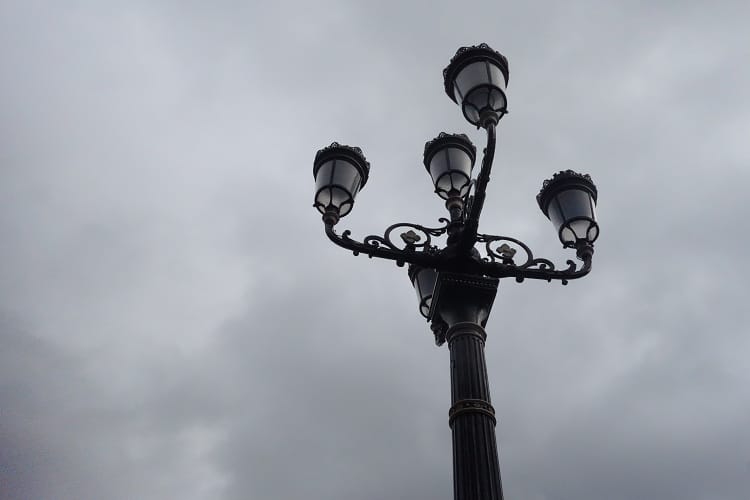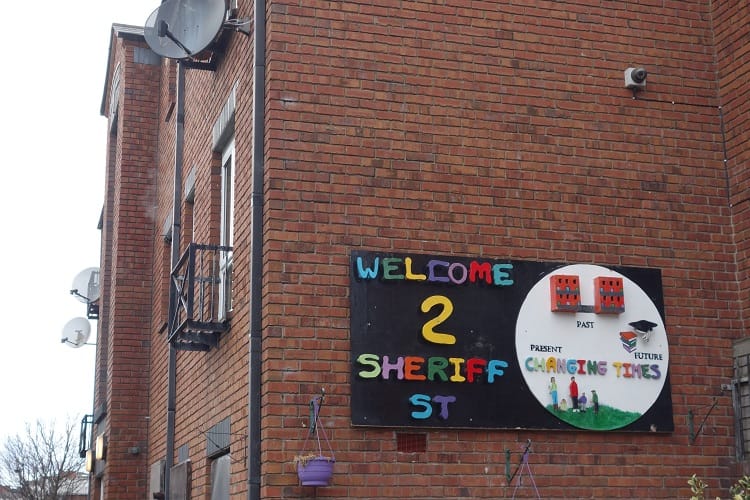What would become of the Civic Offices on Wood Quay if the council relocates?
After The Currency reported the idea of the council moving its HQ, councillors were talking about and thinking through the pros and cons and implications.
When Kieran Mulvey gave an outline of his proposals for the north-east inner city recently, one suggestion was some rebranding for the area. But some wonder if that’s a good use of money.

Does the north-east inner city need a better narrative? Kieran Mulvey thinks so.
In a presentation given last week at Store Street Garda station, he recommended – among many other things – that the area be reimagined and rebranded.
Mulvey was tasked by the Taoiseach in July 2016 to come up with measures by November 2016 to support the long-term economic and social regeneration of the north-east inner city. (His full report is expected soon.)
But until more details are out, many have been speculating on what a rebrand could mean for the area, and whether government funding could be better spent elsewhere.
If an area is already thriving, you can call it what you like, but the area that is under discussion has more than one problem, says independent Councillor Nial Ring.
“It’s a marketing guru’s dream to rebrand and re-image,” he says. “The north inner city’s the north inner city. Most people in the north inner city are proud to say they’re from the north inner city.”
And there has to actually be a brand to begin with in order to rebrand, says Ring.
He says he is willing to wait for the full report before dismissing the idea outright, but says that changing an area’s name – if that’s what is on the cards – is pointless.

“If it looks like a duck and quacks like a duck it’s a duck,” says Ring. “I think you’d lose a lot of the identity.”
It remains to be seen exactly what Mulvey defines as “re-imagining” or “rebranding”.
It can mean different things to rebrand an area, but often it means a marketing campaign aimed at promoting the best an area has to offer.
For some in the north inner city, that has worrying implications.
“Rebrand, to me, smacks of gentrification,” said Seanie Lambe, chairperson of the Inner City Organisations Network (ICON), and a community activist.
“If you’re going to change the name of an area, raise the tone of the area, it would seem to me that the strategy that’s usually used is, in inverted commas, a ‘social mix’,” he said.
Some past efforts to rename in the inner city haven’t gone down well.
Just south of the Liffey, residents objected to attempts by property developer Hibernia REIT to rename their neighbourhood around Creighton Street.
In 2011, Fine Gael Councillor Ray McAdam proposed a motion that Sheriff Street Upper be renamed Point Village Road. That motion failed.
Lambe says that when the Docklands were being developed, the Dublin Docklands Authority suggested rebranding the area as the “East Side”.
“It was absolutely blown out of the water by every single community,” says Lambe. “None of us were going to call the place East Side. It made absolutely no bloody sense to us.”
Not all attempts to remake the image of an area have been as contentious as these, though.
Roger Hobkinson – who worked for the real estate company, Colliers International, on the branding of Cork in 2012 – said he is cautious about using the term “rebranding”.
“You can’t really brand a place as such. Everybody’s got their own thought process of what their place is,” he said.
What you can do is gather all the stakeholders together, and, once they’re singing off the same hymn sheet, then work can commence, he says.
“You have a driving idea and then people start to put together what I would call, ‘the playbook’,” he says. “You use that playbook to help drive forward economic development and growth.

Hobkinson points to areas in London such as Covent Garden and Bishopsgate that have been subject to interventions. He estimates such a strategy could cost between €30,000 and €50,000.
He could also have pointed to Dublin 1, where the city-centre business organisation DublinTown has been running a rebranding campaign: “Dublin 1”.
It has helped reinvigorate the area, says Richard Guiney, CEO of DublinTown.
The campaign, which has run since November 2016 and is estimated to cost from €50,000 to €60,000, aimed to bring more people to the O’Connell Street and Henry Street area. Guiney says it could extend into the north-east inner city.
“But you have to work with what you’ve got,” says Guiney. “You can’t just put a gloss of paint on something.”
Local communities need more than this kind of reinvention, says Fianna Fáil Councillor Paul McAuliffe.
In late 2015, business owners in Ballymun set up the Ballymun 4 Business networking group to try to boost businesses in the area and to draw in new ones.
The group settled on a slogan: “Ballymun – It’s ballymazing”, which aims to help project Ballymun in a positive light. Other ideas included a “Ballyfun day” and a mascot for the Dublin suburb, called Ballyman.
It’s unclear how much it has caught on.
McAuliffe says that communities like those in Ballymun and in the north-east inner city have “a jaundiced view” of language like “rebranding”.
“What they want is real change in their community and not rebranding,” he says. “We’ve tried to promote what is genuinely Ballymun, rather than a community that is something different.”
It isn’t rebranding and marketing that have led to a realisation that Ballymun has changed, said McAuliffe. “All of the towers are gone. No matter what element of rebranding you do, the physical removal of the towers is all you need to know that something has changed.”
There’s also the new arts centre, Axis: Ballymun, he said.
Said McAuliffe: “Working-class communities have been promised and promised so many times that whatever engagement you have with them you need it to be real. They need to see the evidence of it.”
Councillor Ray McAdam says he isn’t going to make a judgment about what’s in the report yet. “There is a number of things we need to look at and rebranding is certainly one of them.”
But “this is one small element of a very comprehensive report,” he says.
“What I would like to see happen in the north inner city is one where we have strong social infrastructure in place, where we have good schools, where we have opportunities for kids,” he says.
Rebranding can’t be seen as separate to all those changes, says McAdam. “The rebranding of an area can be highlighted by the improved services, the improved access and the improved community policing.”
For others, those changes alone, without the branding, would be enough.
Social Democrat Councillor Gary Gannon says the suggestion that the north-east inner city needs rebranding is “a cringey idea”.
If you want to change the area, start with the schools, he says. “Start with education and work all the way up.”
Lambe, from ICON, agrees. “[Mulvey] had a point that the good things, the great history of the area, doesn’t come across through all the bad news. So, he had a point there. But in my view, rebranding or reinventing? I’d like to see some detail in the actual report,” he said.
“And if there is money going to be attached to the report, I wouldn’t be spending it on rebranding,” he says.